Advertisement
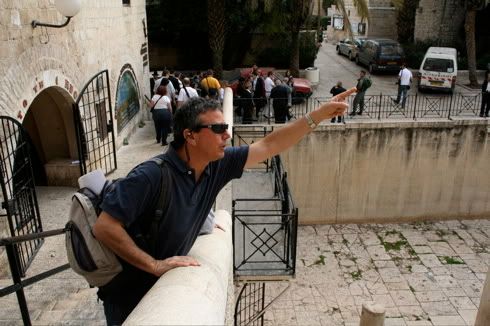
This is our guide in the Old City of Jerusalem, Ian, who's a prominent archaeologist and gave the single best summary of the entire history of the Jewish people that I've ever heard delivered in a 5-minute summary.
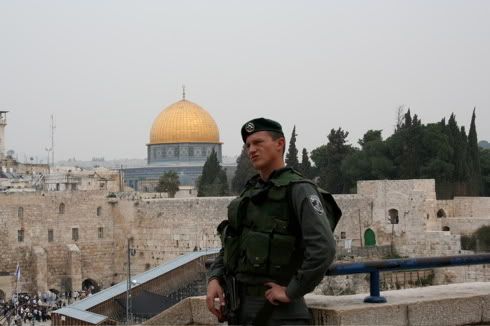
Global hot spots necessitate hot soldiers, right? Behind this guy is the Western Wall (you can spy men praying in the bottom left of the picture) and the Dome of the Rock, the third most holy place in Muslim theology. The close proximity of the two symbols of huge religious significance is, of course, illustrative of the entire conflict, and one of the reasons why Jerusalem remains in dispute as far as Palestinians are concerned.
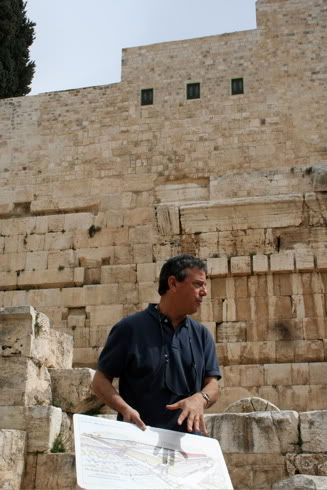
This is the Western Wall, but beyond the area where you see people praying. The ground I was sitting on when I took this picture was underground until the 20th century, when archaeologists started peeling the layers back to reveal the true size of Herod's great Temple Mount. The wall, according to Ian, at its peak was about the height of the tree, in the upper left of the picture. The notches in the wall, above Ian's head, were cut into the wall to pipe water to a swimming pool during Muslim dominance of the city. The swimming pool was one of the layers removed to reveal the original ground and the ritual Jewish baths previously hidden.

This pile of rocks came tumbling down when the Romans conquered the city. Each rock, 3-6 tons, was burned to weaken it or toppled by mechanical force. The entire Western Wall is built without concrete of any sort. Instead, the rocks were cut smoothly and laid on top of one another. The whole feat of engineering is still partly unexplained, but they think workers probably used long ramps, scooting 10-ton rocks down them to the foot of the mountain after they had cut them out of the stone at the top of the hill.
Recommended
Advertisement
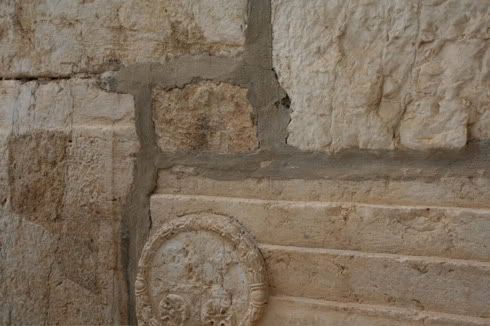
This is on another side of the Temple Mount. In this picture, rocks from the Christian, Jewish, and Muslim areas of the city sit right next to each other.
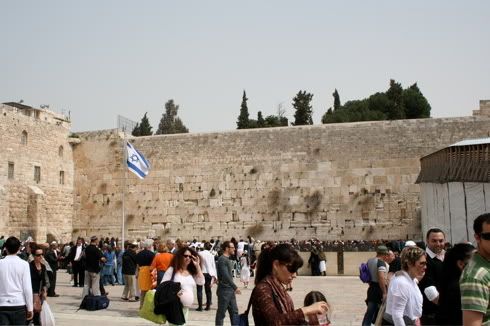
The Western Wall.

This is inside the Church of the Holy Sepulchre, which is said to be the spot where Jesus walked up Calvary to his death. All of this stuff is to some extent guesstimation when it comes to placing these actual events, but the long history of the traditions make the spots holy and moving, nonetheless. Above is the stone on which He was placed after He died (well, technically, the real one is under this one, as people were destroying the real one when it was on display by cutting pieces of it to use as relics in other places.) It's also said to contain the place where Jesus was buried.

Early Christians left their mark on the church when they took the pilgrimage there.
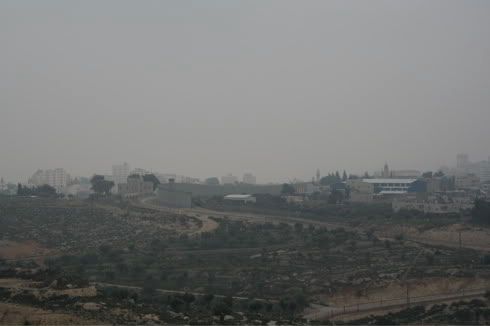
So, this is the security fence/wall/barrier, or whatever it is anyone of any given political persuasion calls it. Standing on this hill, in the Jerusalem neighborhood of Gilo, which was hit hard by snipers across the valley in the second intifada, it's amazing there was no wall built sooner. When you're able to feel the proximity of the two areas, it's really astounding to think that the passage was mostly free for so many years despite repeated terror attacks (though not on the scale of the second intifada). Most of the fence is actually chain-link fence instead of wall, but it's electronic, so it alerts IDF every time someone tries to jump over or cut through. IDF's response time is under 10 minutes, if I remember correctly, and the fence slows down would-be attackers enough for them to often foil them.
Advertisement























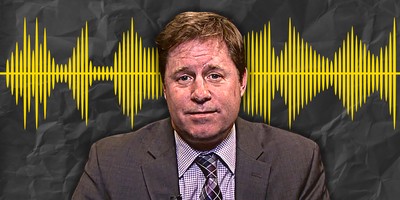
Join the conversation as a VIP Member